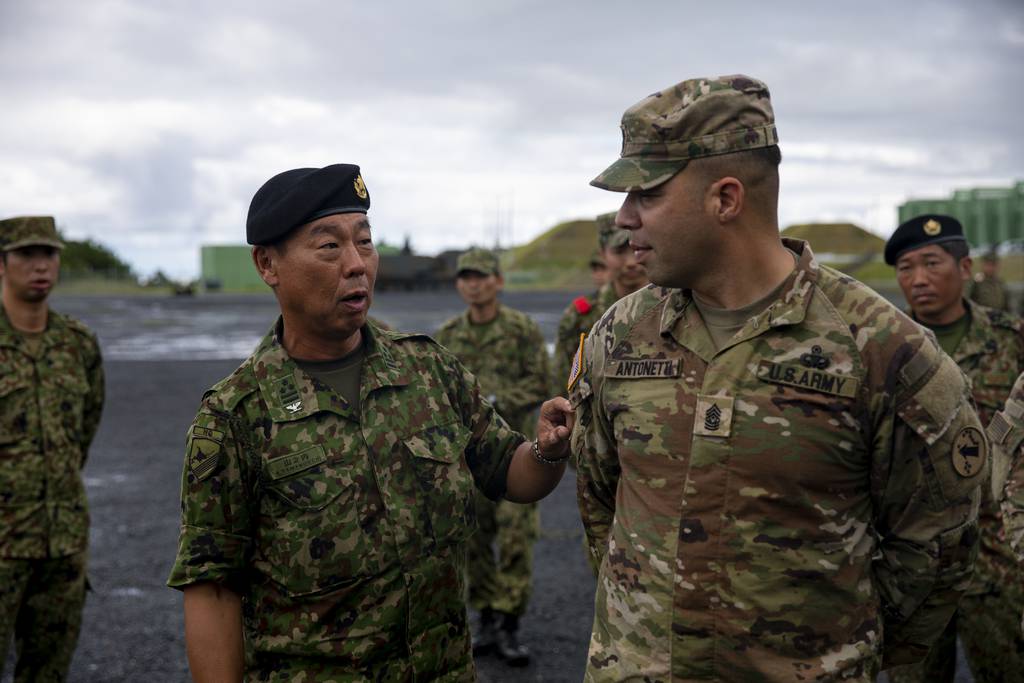WASHINGTON — The U.S. Army’s multidomain task force units could see elements that include allies and partners, according to the head of U.S. Army Pacific.
“We’re actually doing some work right now with the third MDTF in Hawaii to create conditions for a combined MDTF,” Gen. Charles Flynn told Defense News on Oct. 9 at the Association of the U.S. Army’s annual conference. “Australia is moving five officers this summer — summer of 2024 — to Hawaii so we can build out a combined element of the multidomain task force”
The service’s first MDTF was experimental, but since then the Army has operationalized its existing units and determined it will grow at least four more. The Army established that initial one at Joint Base Lewis-McChord in Washington state around 2018. U.S. Indo-Pacific Command theater exercises helped inform the Army’s Multi-Domain Operations warfighting concept, which has now evolved into doctrine.
The Army then established another MDTF in Europe in 2021, and another last year in Hawaii.
The units are designed to operate across all domains — land, air, sea, space and cyberspace — and are equipped with the Army’s growing capabilities, including long-range precision fires.
Earlier this year, the now-retired Army Chief of Staff Gen. James McConville made a case to deploy the fourth MDTF in the Indo-Pacific region, bringing the number of MDTFs in that theater to three. Flynn agreed that the fourth MDTF should deploy to the Pacific. For that unit, the Army is still considering specific locations in the region, Flynn explained.
The Army is also considering how it could include Japan in an MDTF, similar to an evaluation for Australia.
Japan’s National Security Strategy and its defense forces’ cross-domain operations doctrine could align well with the intent of multidomain task forces.
“There’s obviously a great deal of synergy in the organizational constructs that they’re trying to create and compare and contrast to what we learned by building the multidomain task force,” Flynn said.
The third MDTF, and the second in the Pacific, just completed a deployment to participate in Talisman Sabre, a large-scale exercise with Australia.
And now the MDTF is working in the Philippines using its Combined Information and Effects Fusion Cell to combine open-source maritime and air applications in a common operational picture so the Philippines’ joint commands “can actually see into the maritime and air littorals, which is out in their exclusion zone, so that they can then track friendly or adversary actions that are happening” in those domains, Flynn explained.
The domain awareness from land, Flynn added, allows military commanders or political leaders to make well-informed decisions.
But the most important part of MDTFs are their multidomain effects battalions, Flynn noted.
“I like to refer to it as sort of the targeting brain that brings together all source information, intelligence, electronic warfare, space and cyber tracks, [as well as command, control, computers, communications, cyber, intelligence, surveillance and reconnaissance], but also can conduct counter-C5ISR so that we can provide intel support to joint [targeting],” he said. “It is designed from the land to see, sense and understand into all the domains, and then to be able to share that information with the joint force.”
Jen Judson is an award-winning journalist covering land warfare for Defense News. She has also worked for Politico and Inside Defense. She holds a Master of Science degree in journalism from Boston University and a Bachelor of Arts degree from Kenyon College.








